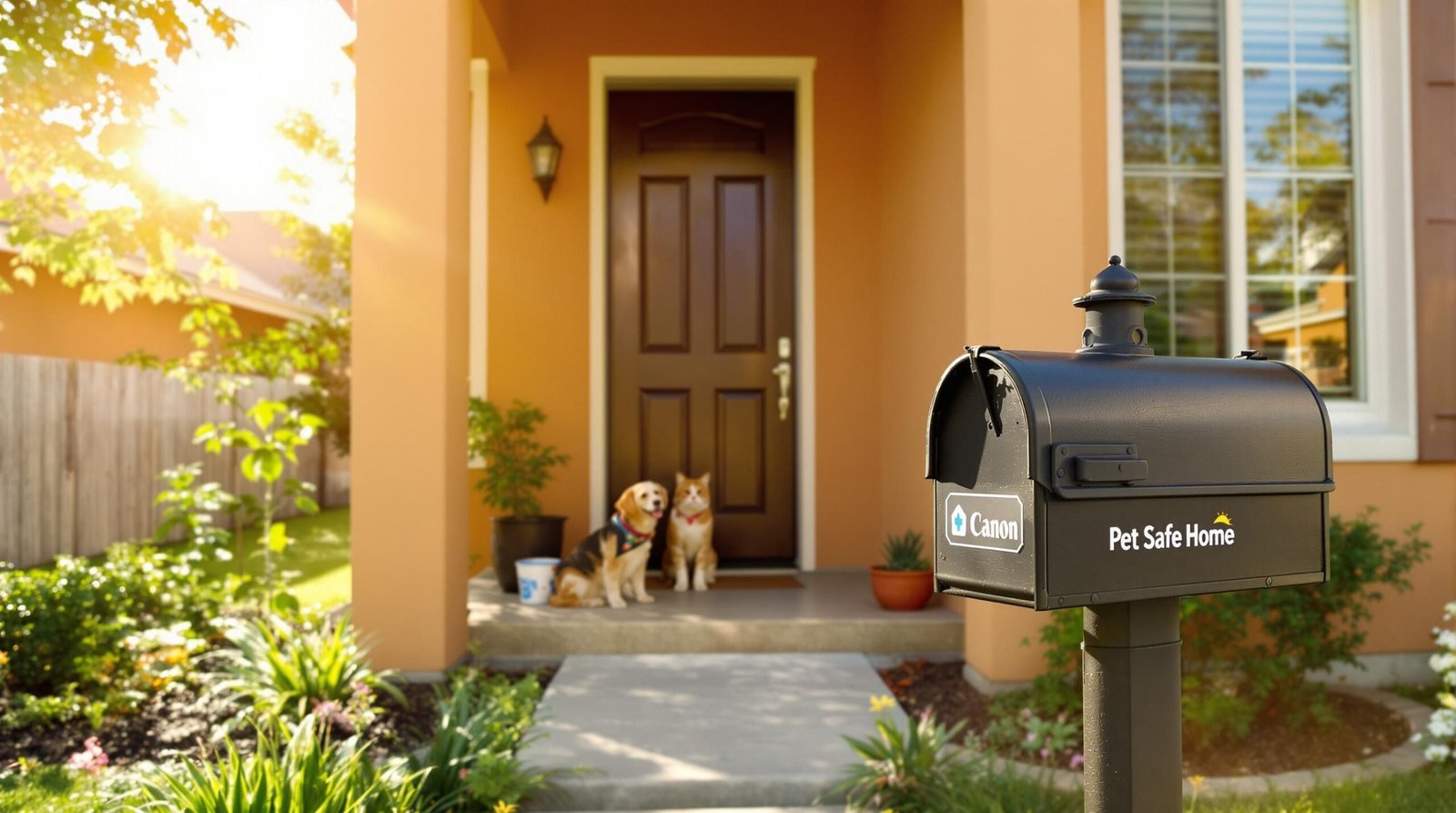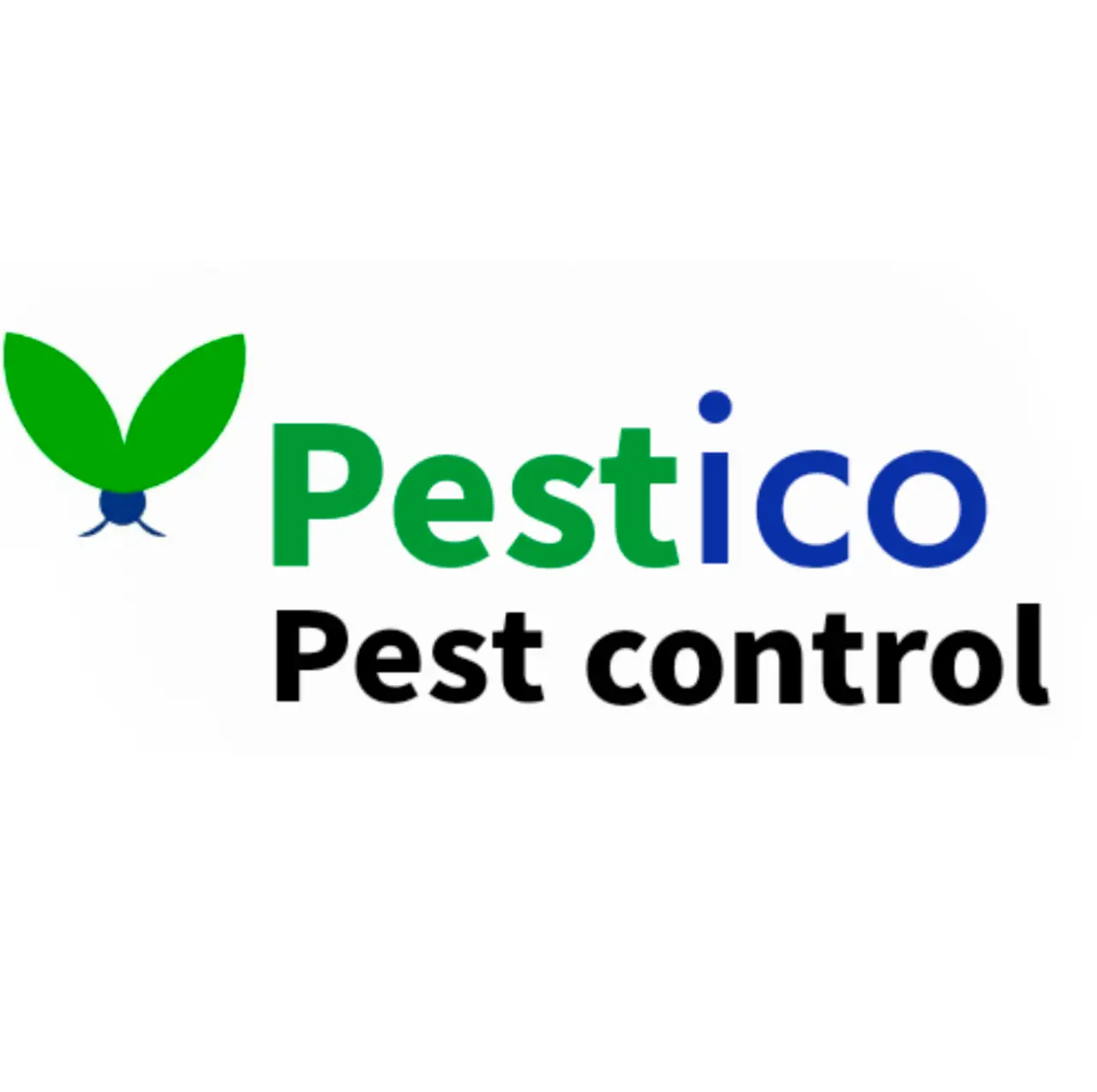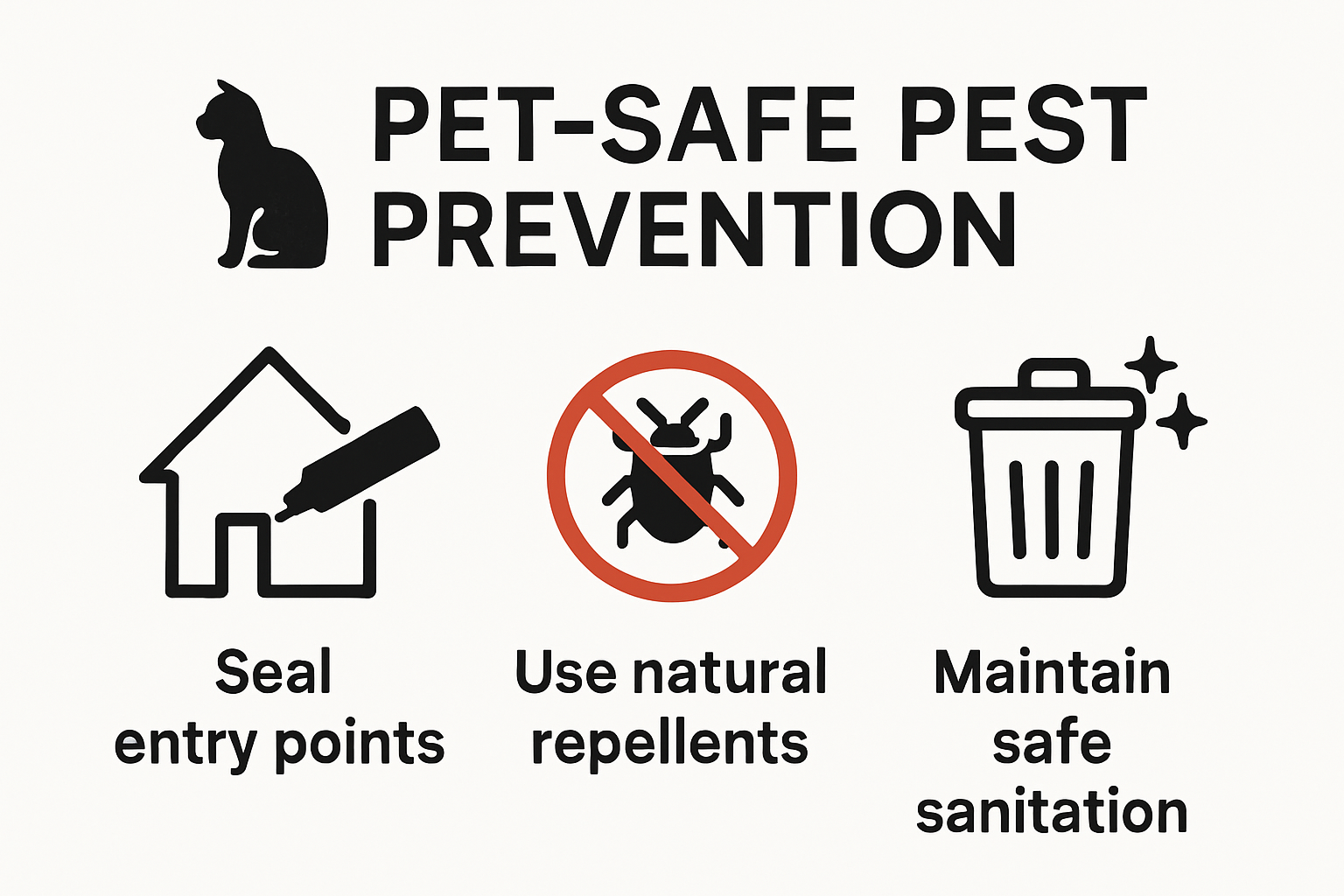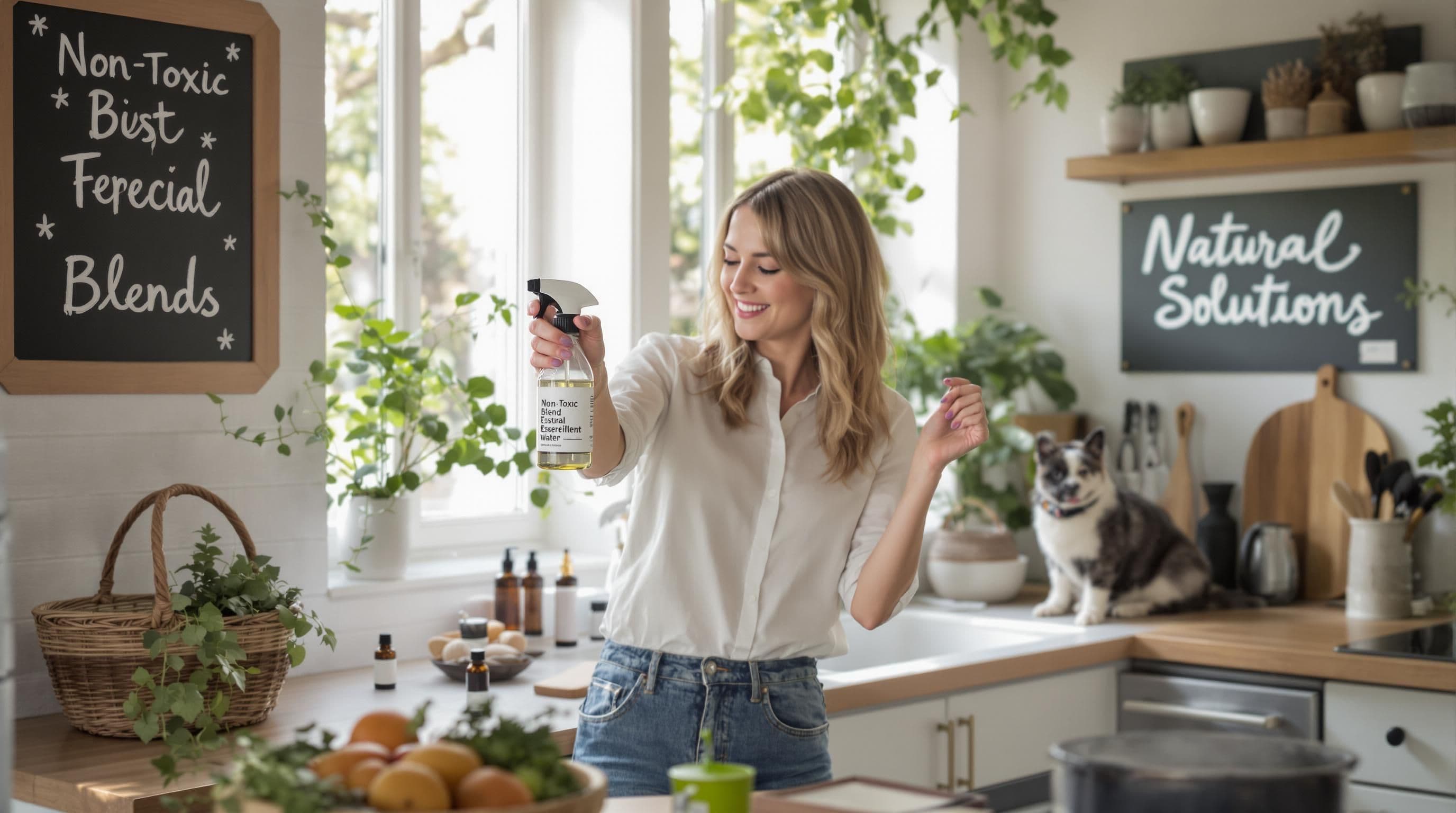
Pet Safe Pest Prevention Tips for Texas Homeowners 2025
Pet safe pest prevention can feel almost impossible when living in Texas. Between the intense heat and sudden downpours, pests seem unstoppable and pets end up in harm’s way. Here’s a shocker though. Over 60 percent of traditional pest control products pose serious health risks to animals, according to multiple veterinary studies. But there’s a smarter path that keeps both your home and your pets protected—without toxic chemicals lurking underfoot.
Table of Contents
- Why Choose Pet Safe Pest Prevention
- Home Maintenance to Prevent Pests Safely
- Natural and Non-Toxic Pest Control Solutions
- Choosing Professional Pet Safe Pest Services in Texas
Quick Summary
| Takeaway | Explanation |
|---|---|
| Prioritize pet-safe pest prevention strategies. | Implement holistic pest management techniques that do not harm pets, such as natural and targeted treatments. |
| Maintain home integrity to prevent pests. | Regularly inspect and seal entry points around your home to deter pests and protect your pets. |
| Utilize natural pest control solutions. | Use botanical and essential oils as effective, non-toxic alternatives for repelling pests safely. |
| Choose certified professionals for pest control. | Select licensed pest control services with expertise in pet-safe methods to ensure your pets’ safety during treatments. |
| Consult before treatment for customized plans. | Engage pest control experts to develop tailored strategies considering your pets’ needs and vulnerabilities. |
Why Choose Pet Safe Pest Prevention
Protecting your pets while effectively managing pest problems requires a strategic and thoughtful approach. Homeowners face complex challenges when addressing pest control, especially when furry family members are present. Understanding the critical importance of pet safe pest prevention means recognizing that traditional pest control methods can pose significant risks to animal health.
The Hidden Dangers of Traditional Pest Control
Traditional pest control methods often rely on chemical treatments that can be extremely hazardous to pets. Research from the National Pesticide Information Center reveals that many common pesticides contain toxic compounds that can cause serious health complications for animals. Exposure can lead to neurological issues, respiratory problems, and in severe cases, fatal poisoning. Pets are particularly vulnerable because they have smaller body masses and tend to interact more closely with treated surfaces through direct contact or accidental ingestion.
The U.S. Environmental Protection Agency’s Integrated Pest Management guidelines emphasize the importance of using reduced-risk treatment methods that minimize chemical exposure. This approach prioritizes prevention, targeted treatments, and pet friendly alternatives that protect both your home and your animal companions.
Comprehensive Pet Safe Strategies
Choosing pet safe pest prevention means implementing holistic strategies that address pest management without compromising animal health. These strategies involve multiple layers of protection that go beyond traditional chemical treatments. Homeowners can leverage natural repellents, create physical barriers, maintain cleanliness, and use targeted treatments that specifically minimize risk to pets.
Key considerations include selecting pest control products explicitly labeled as pet safe, ensuring proper application techniques, and understanding the specific vulnerabilities of different animal species. Some pets might be more sensitive to certain treatments, so consulting with veterinary professionals and pest control experts becomes crucial in developing a comprehensive prevention plan.
The goal is not just eliminating pests but creating an environment where your pets can thrive safely. By prioritizing pet safe pest prevention, homeowners demonstrate a commitment to their animals’ well being while maintaining a clean, pest free living space. Each preventative measure represents an investment in both home protection and pet health, ensuring a harmonious and safe environment for every family member.
Home Maintenance to Prevent Pests Safely
Home maintenance plays a crucial role in creating a pest-resistant environment that protects both your property and your pets. Implementing strategic prevention techniques can significantly reduce the likelihood of pest infestations while maintaining a safe living space for your entire family.
Structural Integrity and Pest Barriers
Research from the U.S. Environmental Protection Agency highlights the importance of creating physical barriers to prevent pest entry. Homeowners should conduct thorough inspections of their home’s exterior and interior, focusing on potential entry points. Seal cracks and crevices around windows, doors, foundation lines, and utility pipes using pet safe caulking materials. Pay special attention to areas where different building materials meet, as these often create natural gaps that pests can exploit.
Weather stripping and door sweeps provide additional protection against small insects and rodents. Texas A&M AgriLife Extension Service recommends checking these barriers seasonally, especially before summer and winter when pests seek shelter from extreme temperatures. Ensure that screens on windows and doors are intact, without tears or gaps that could allow insects to enter.
To provide an at-a-glance overview, the table below summarizes key home maintenance steps and their benefits for pet-safe pest prevention:
| Maintenance Step | Purpose | Pet Safety Benefit |
|---|---|---|
| Seal cracks/crevices | Block pest entry points | Reduces exposure to pests and chemicals |
| Inspect/repair window & door screens | Prevent insect intrusion | Minimizes risk of insect bites for pets |
| Add/maintain weather stripping & sweeps | Deter small insects and rodents | Prevents rodent encounters indoors |
| Store pet food in sealed containers | Remove attractants | Avoids pest-contaminated pet food |
| Clean feeding and kitchen areas | Eliminate food debris | Reduces attraction for pests near pets |
| Remove standing water outdoors | Discourage mosquitoes and insects | Limits mosquito exposure for pets |
| Trim vegetation and remove yard clutter | Reduce pest harborage | Decreases hidden pest habitats around pets |
Sanitation and Habitat Management
Effective pest prevention extends beyond physical barriers. Oklahoma State University Extension emphasizes the critical role of sanitation in pest control. Remove potential food sources by storing pet food in sealed containers, cleaning pet feeding areas immediately after use, and maintaining clean kitchen and dining spaces. Regularly dispose of garbage in sealed bins and clean areas that might collect food debris or grease.
Outdoor maintenance is equally important. Trim vegetation away from your home’s exterior, creating a clear boundary that reduces pest hiding spots. Remove standing water sources, which can attract mosquitoes and other insects. Keep firewood and other potential nesting materials away from your home’s foundation, and maintain a clean yard free of debris that could harbor pests.
Creating an environment that is inhospitable to pests requires consistent effort and attention to detail. By implementing these strategic home maintenance practices, homeowners can effectively prevent pest infestations while ensuring the safety of their pets and family. Regular inspections, proactive cleaning, and strategic barriers form the foundation of a comprehensive pest prevention approach that protects your home without compromising animal health.
Natural and Non-Toxic Pest Control Solutions
Natural and non-toxic pest control solutions offer homeowners a safe alternative to traditional chemical treatments, providing effective pest management that protects both family and pets. These methods leverage nature’s own mechanisms to deter and control unwanted insects and rodents without introducing harmful toxins into your living environment.
Botanical and Essential Oil Repellents
Essential oils and plant-based solutions provide powerful natural pest deterrents that are both effective and safe for pets. Certain essential oils like peppermint, lavender, and citronella act as natural insect repellents. Research from Texas A&M AgriLife Extension suggests that strategic use of organic practices can significantly reduce pest populations without relying on harsh chemicals.
Homeowners can create DIY spray solutions using combinations of water and essential oils to create barriers around entry points and outdoor living spaces. Peppermint oil effectively repels spiders and ants, while lavender can deter moths and flies. Citronella works well against mosquitoes, providing a natural alternative to traditional chemical repellents.
Below is a summary table highlighting common pet-safe natural repellents and their primary pest targets:
| Natural Repellent | Target Pests | Application Method |
|---|---|---|
| Peppermint oil | Spiders, ants | Spray around entry points |
| Lavender | Moths, flies | Sachets or spray in rooms |
| Citronella | Mosquitoes | Candles, sprays outdoors |
| Beneficial insects | Aphids (e.g., ladybugs) | Release in gardens |
| Nematodes | Soil-dwelling pests | Mix/apply to garden soil |
| Companion plants | Various insects | Plant beside susceptible crops |
Biological Pest Control Strategies
Biological pest control involves using natural predators and environmentally friendly techniques to manage pest populations. Introducing beneficial insects like ladybugs can help control aphids in gardens, while nematodes can target soil-dwelling pests. These methods work with the ecosystem rather than against it, creating a balanced approach to pest management.
Compost and organic gardening practices also play a crucial role in natural pest prevention. By maintaining healthy soil and promoting biodiversity, homeowners can create an environment that naturally resists pest infestations. Companion planting techniques, where certain plants are grown together to repel insects, offer another strategic approach to pest control.
Implementing natural and non-toxic pest control solutions requires patience and consistent application. These methods may take longer to show results compared to chemical treatments, but they provide a safer, more sustainable approach to pest management. By understanding and working with natural ecosystems, homeowners can create a pest-resistant environment that protects their family, pets, and the broader ecological system. The key is to remain proactive, observant, and committed to holistic pest prevention strategies that prioritize health and environmental responsibility.
Choosing Professional Pet Safe Pest Services in Texas
Selecting the right professional pest control service in Texas requires careful consideration, especially when protecting pets and family members from potential health risks. Homeowners must navigate a complex landscape of service providers, ensuring they choose a company that prioritizes both effective pest management and animal safety.
Credentials and Professional Standards
The Texas Pest Control Association emphasizes the importance of working with licensed and certified pest control professionals. Homeowners should verify a company’s credentials, including state licensing, insurance, and professional certifications. Look for technicians who have specialized training in pet safe pest control methods and demonstrate a comprehensive understanding of integrated pest management approaches.
Additionally, reputable pest control services should provide transparent documentation about the chemicals and methods they use. Texas A&M AgriLife Extension Service recommends requesting detailed safety information about treatment materials, including precise application techniques that minimize risk to pets and humans.
Consultation and Customized Treatment Plans
A professional pest control service worth considering will offer comprehensive initial consultations that go beyond standard treatment protocols. These consultations should include a thorough assessment of your specific property, understanding your pets’ unique needs, and developing a customized pest management strategy. Experienced technicians will ask detailed questions about your pets’ habits, living spaces, and potential vulnerabilities.
Key questions to ask potential pest control providers include their approach to pet safety, the types of products they use, recommended precautions during and after treatment, and their protocol for addressing potential pet exposure incidents. The best services will have clear, documented processes that demonstrate a genuine commitment to animal welfare.
Choosing a professional pest control service is more than a transaction it is a partnership in maintaining a safe, healthy living environment. By carefully evaluating potential providers based on their expertise, commitment to safety, and professional standards, Texas homeowners can find a pest control solution that effectively manages pest populations while protecting their beloved pets. Prioritize companies that view pet safety as a fundamental aspect of their service, not an afterthought.
Frequently Asked Questions
What are pet safe pest prevention methods?
Pet safe pest prevention methods include using natural repellents like essential oils, maintaining sanitation, sealing entry points in the home, and opting for professional pest control services that use non-toxic products.
How can I prevent pests while keeping my pets safe?
To prevent pests safely, regularly inspect your home for entry points, maintain cleanliness by eliminating food debris, and choose organic or botanical pest control solutions that are safe for pets.
Are traditional pest control methods harmful to pets?
Yes, traditional pest control methods often use toxic chemicals that can pose serious health risks to pets, including neurological issues and respiratory problems. It’s important to choose pet safe alternatives instead.
How can I identify pet safe pest control services in Texas?
Look for licensed pest control companies in Texas that emphasize pet safety in their treatments. Ask about their use of non-toxic products, their experience with pet safe methods, and request detailed information on their approaches to treatment.
Keep Your Pets Safe and Pest-Free – The Local Solution for Texas Homes
It is tough to keep your pets protected from harmful chemicals while preventing pest infestations in Texas. This article highlighted a major concern for homeowners – traditional pest control can put your pets at real risk, especially when chemical exposure can cause serious health problems. You need a solution that respects your commitment to your family’s safety while actually keeping your home pest-free.
Your peace of mind starts with a family-owned team that only uses strategies and products proven to be safe for animals. Pestico brings affordable pet safe pest control to your door, so you never have to choose between effective treatment and pet health. Our experts use holistic, non-toxic techniques and always prioritize your animals’ well-being. Do not wait until pests create bigger risks for your loved ones. Contact us now to schedule your personalized consultation and experience true Texas hospitality with top-rated pet safe pest prevention. Explore our service options and partner with the local professionals who make your pets’ safety their highest priority.



